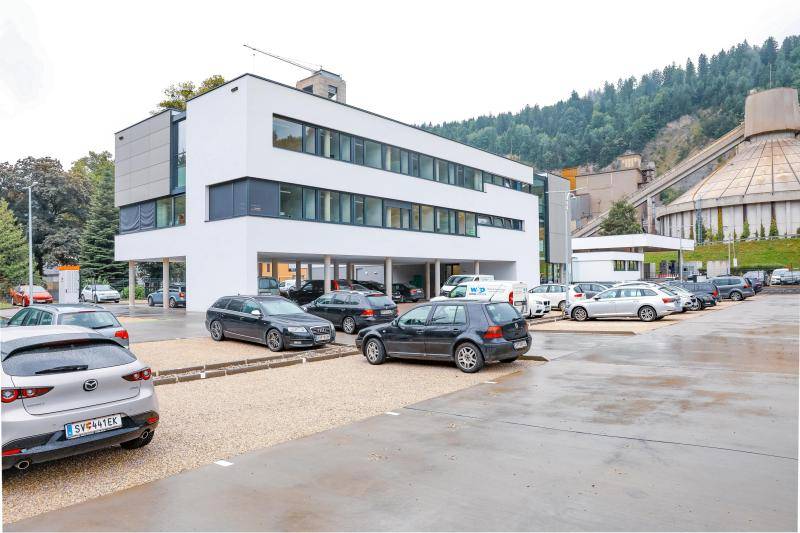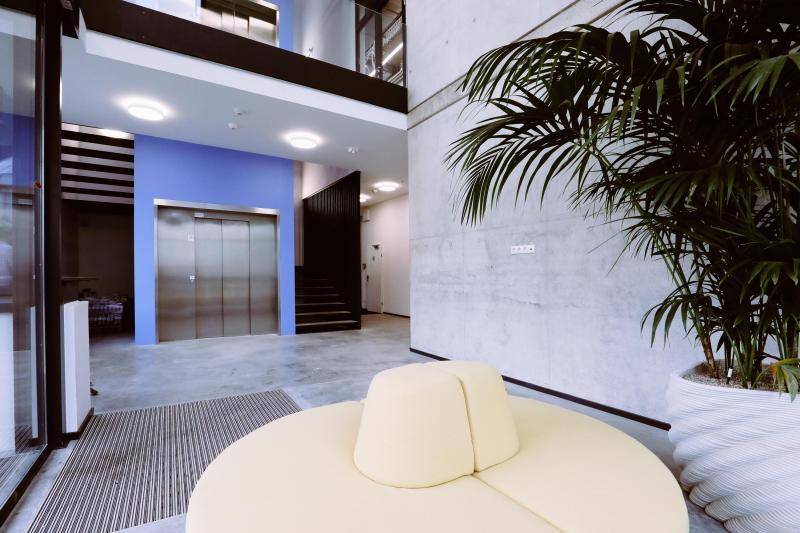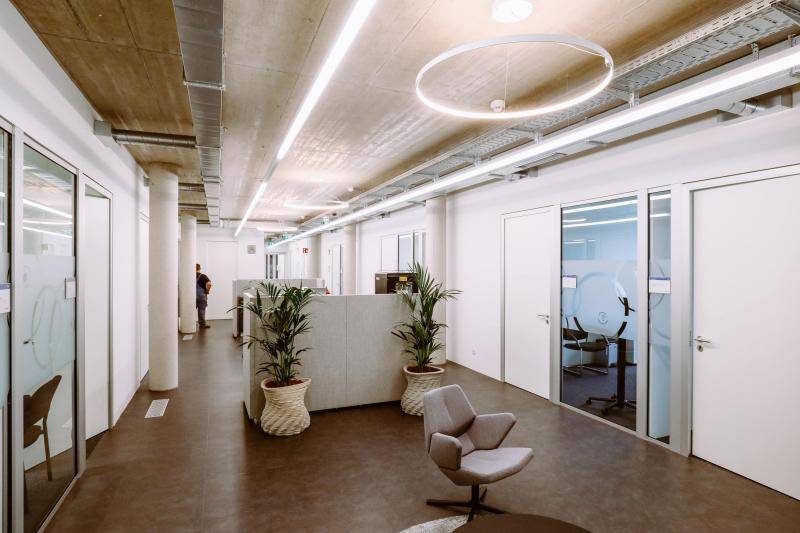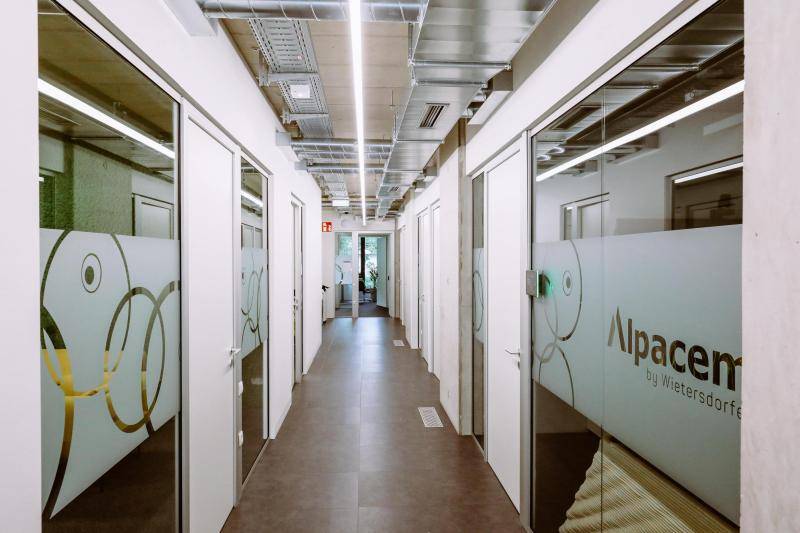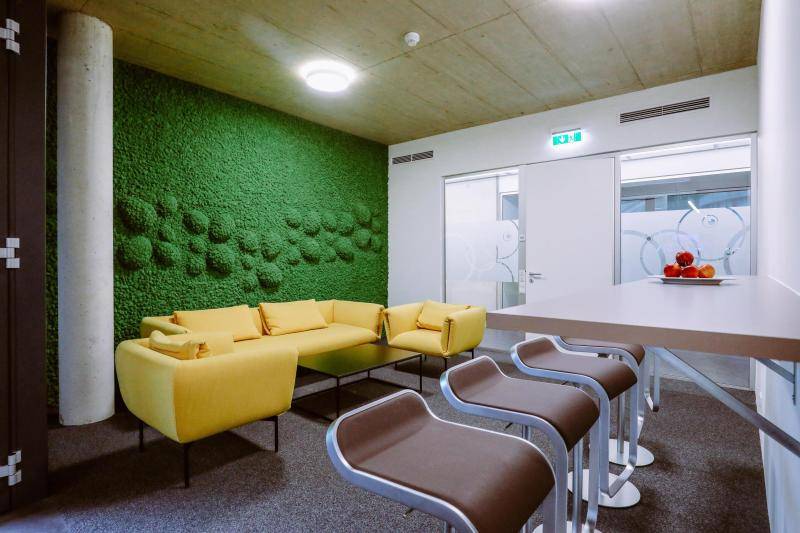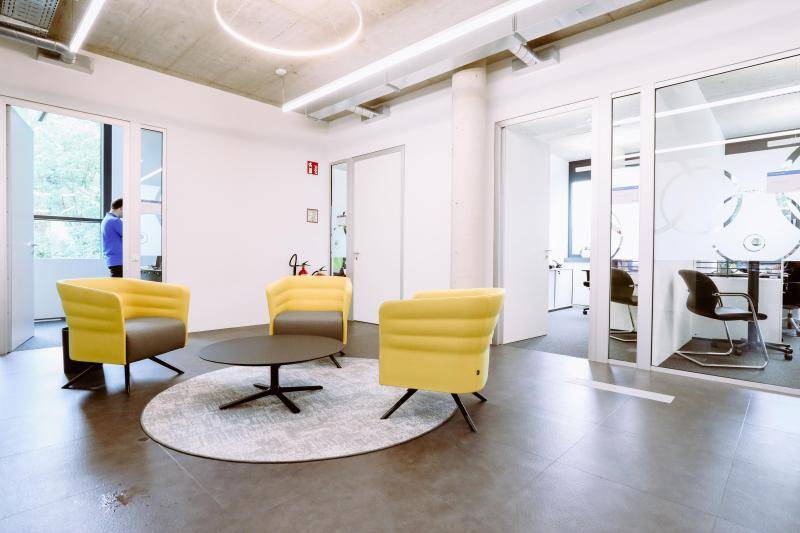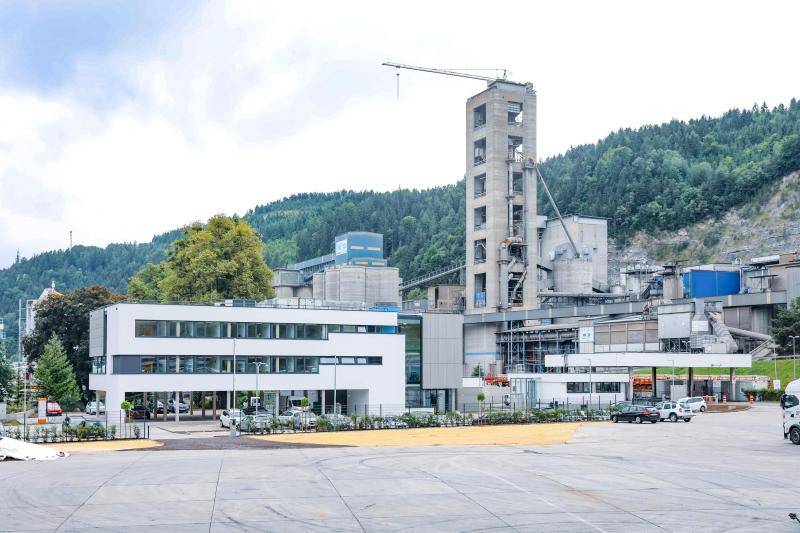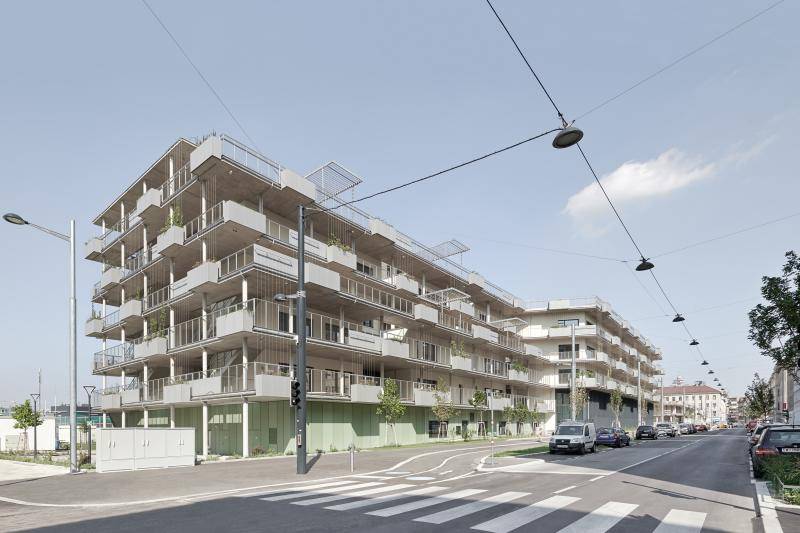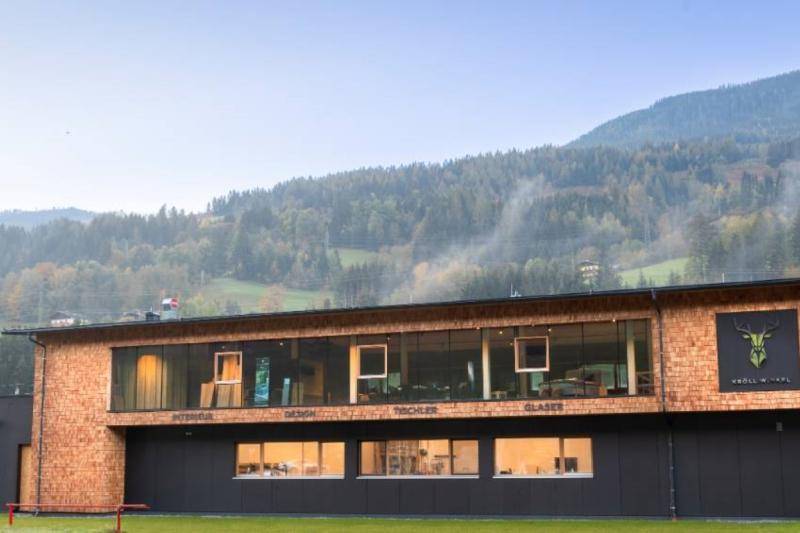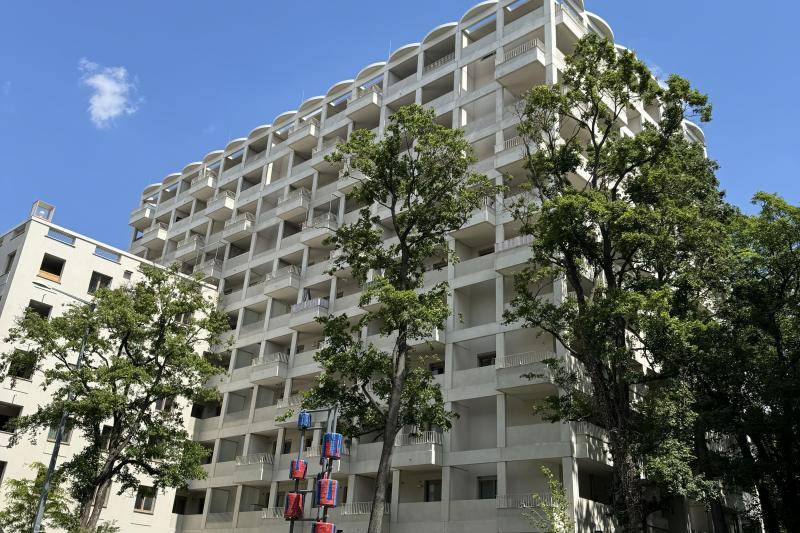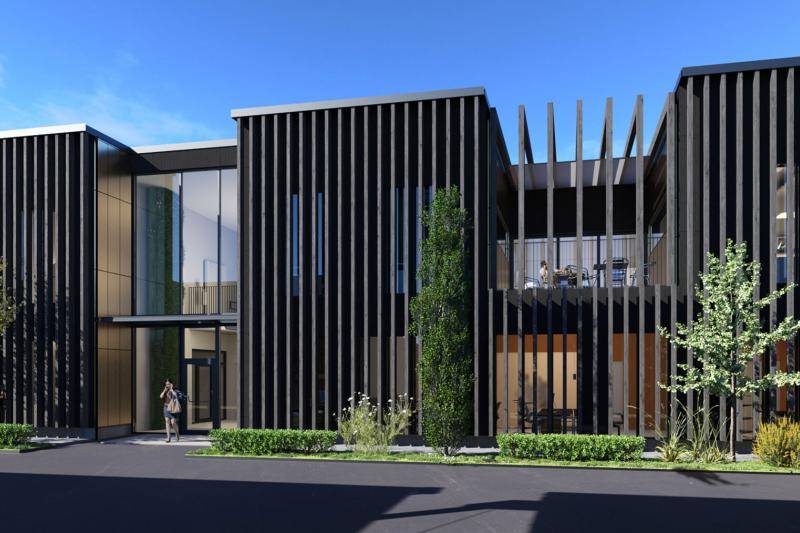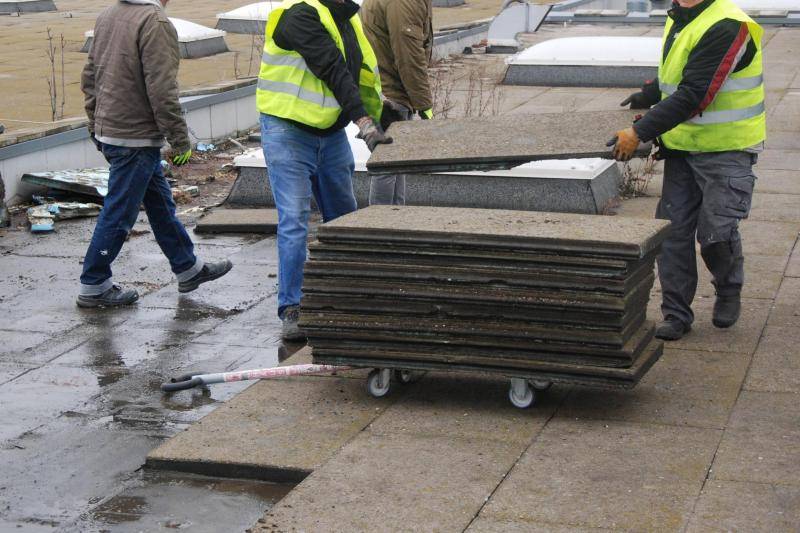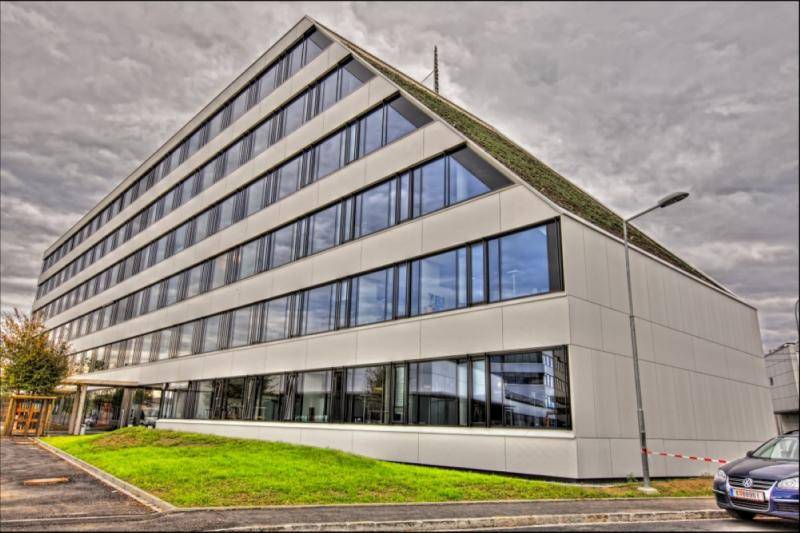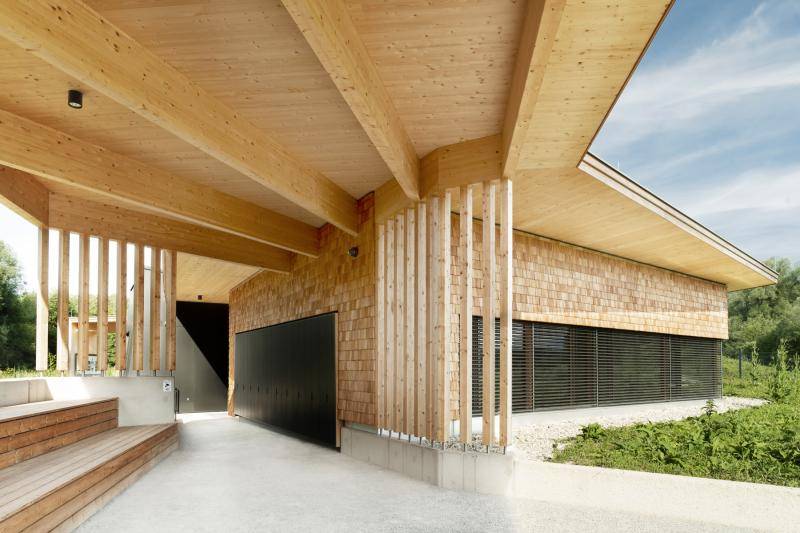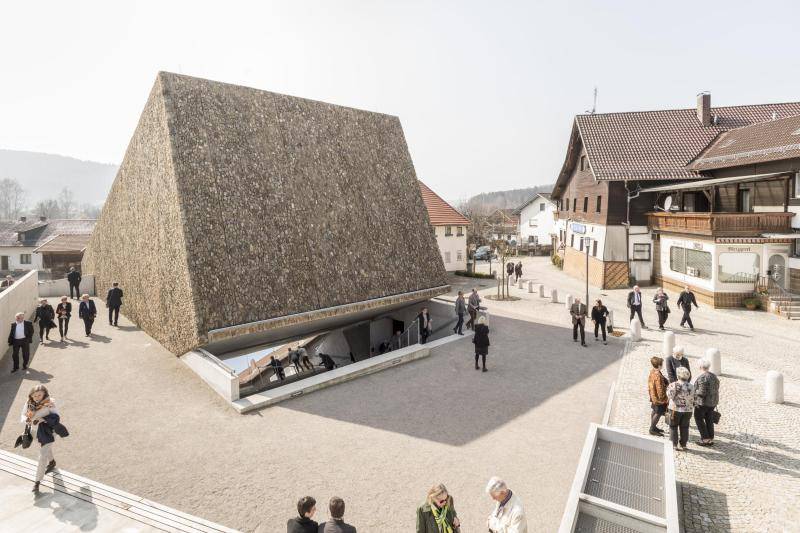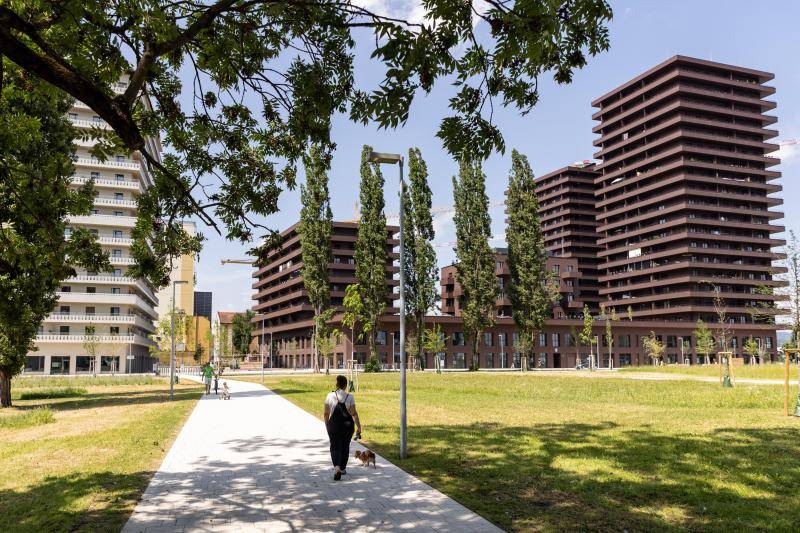Alpacem Headquarters
With the new Alpacem headquarters, a prime example of the decarbonization of construction was achieved - with CO2-optimized concretes and component activation. Good for the climate and a special place for the employees.
w&p Zement GmbH
2023
Construction company: Bauunternehmung Granit
Structural engineering: Oberessl & Kanz ZT
Building services: Oberessl & Kanz ZT
1.478 m²
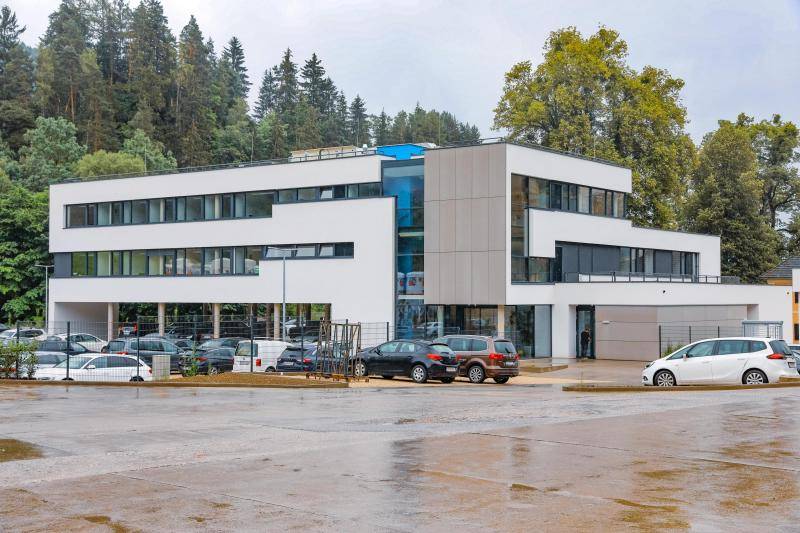
Wietersdorf is home to the headquarters of Wietersdorfer Alpacem GmbH and w&p Zement GmbH, which belongs to Alpacem and runs a large cement plant. Both the offices and various ancillary rooms were fragmented and in an inefficient condition after a long history dating back to 1893. Therefore, a new central building was projected to consolidate offices and employee areas. First, it was examined whether existing buildings were worthy of renovation in terms of the resource-efficient continued use of existing structures and whether there was a possibility of expansion.
The objective from the start of planning was to use all potentials to reduce the ecological footprint in the construction and operation of the building. The newly developed CO2-optimized cement (CEM II/C) was used, as were recycled materials in concrete production, heat pumps, and temperature control of the building through component activation. As a result, w&p succeeded in creating a prime example and a significant reference for the application of new cements as well as component activation in commercial and industrial construction.
The new cement was used on a large scale for the first time. With 1,800 cubic meters of ready-mix concrete used, 50 percent of the concretes were produced with the new, CO2-optimized CEM II/C-M(S-LL) 42.5 N. Compared with the use of conventional cement types, this resulted in a reduction of around 25 percent in CO2 per ton of cement compared with the average Austrian cement. In addition, it was shown that, with optimal planning, recycled aggregates can also be used together with the CO2-efficient cement type CEM II/C on a large scale, which will be a key success factor for the circular economy in concrete as a building material in the future.
(Text: w&p Zement GmbH)
